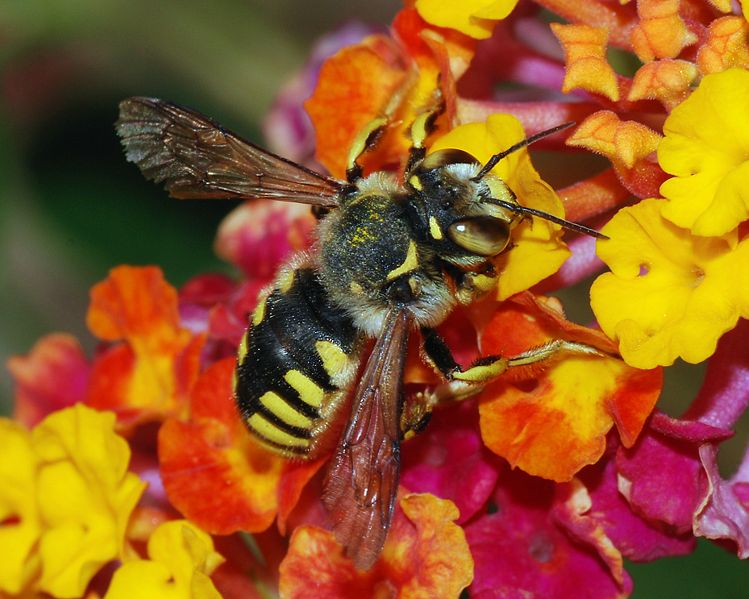A Solitary Bee
Whilst you’re walking round the Pond you might want to keep an eye out for some types of bees that you may not be familiar with!
Colin Gray, Chairman of Fleet Pond Society, writes:
Solitary Bees
Did you know that Britain has more than 250 species of native bee? All of these bees play an essential role by pollinating flowers. But these bees are becoming scarce, with fewer wild flowers and suitable nest sites and an increase in pesticide use. Now around 25 per cent of our native bees are listed as endangered species.
Out of these 250 species, over 90% of them are solitary bees. By solitary we mean that a single female, after she emerges from her pupae and is mated by a male, constructs, provisions and lays an egg in each cell in a nest by herself. This in comparison with social (called eusocial) bees like the Bumble Bees, Honey Bees and Stingless Bees, all of whom have a Queen who lays eggs and a number of workers who look after them.
Female solitary bees prepare their own nest in the ground, in cracks or crevices in walls, or in wood. They gather nectar and pollen as food for their own offspring, and provide little or no further care after their eggs are laid.
Solitary bees come in many different sizes, colours and shapes. Common solitary bees are mason bees, miner bees, sweat bees, wool-carding bees and carpenter bees. They vary in colour from basic black to bright metallic green, blue or red. Some solitary bees superficially resemble wasps.
Leafcutting and Mason Bees, collectively called megachilids (pronounced mega kyle’ lids)
Life cycle of the Common Leaf-Cutter Bee
Leafcutter bees nest in soft, rotted wood, thick-stemmed pithy plants such as roses and in similar materials that the bees can easily cut through and excavate. Nest tunnels may extend several inches deep and coarse sawdust is thrown out at the entrance.
After the nest has been produced, leafcutter bees collect fragments of leaves to construct individual nest cells. The bees cut leaves in a very distinctive manner, making a smooth semicircular cut about 3/4-in in diameter from the edge of leaves.
These are carried back to the nest and used to fashion nest cells within the previously constructed tunnels. Each leaf-lined cell is then provisioned with a mixture of nectar and pollen. An egg is then laid and the cell sealed, producing a finished nest cell that somewhat resembles a cigar butt.
A series of closely packed cells are produced in sequence so that a finished nest tunnel may contain a dozen or more cells forming a tube 10cm to 20cm long. The young bees develop and remain within the cells, emerging the next season. Leaf-cutter bees differ from related species in that they collect pollen on their abdomens rather than on their hind legs.
Picture credits: top and bottom.
Ed. This article was first posted in November 2008 and has become one of the most popular ever published on this blog, with views from all over the world!


